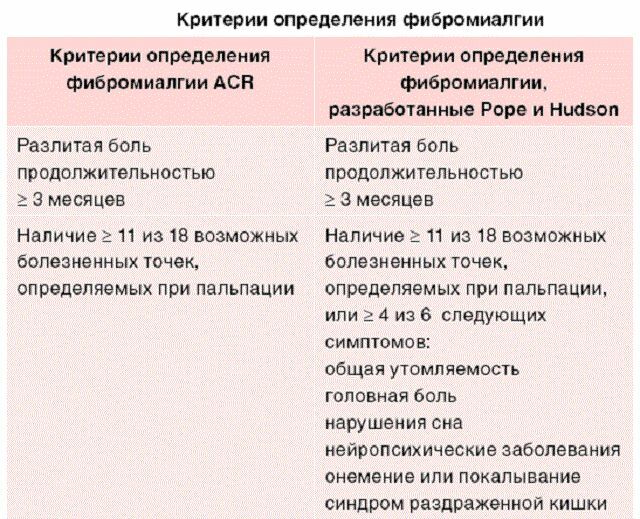 Vertebrogenic cervicalgia - is a pain in the neck of the , accompanied by a restriction of muscle mobility and, often, autonomic dysfunction.
Vertebrogenic cervicalgia - is a pain in the neck of the , accompanied by a restriction of muscle mobility and, often, autonomic dysfunction.
The disease is caused by impairment of the functions of the cervical spine due to the traumas, osteoporosis, rheumatoid arthritis and other ailments.
Vertebrogenic cervicalgia is chronic, and may also be temporary.
Contents of the article
- Types of cervicalgia
- Causes of
- syndrome How
- manifests itself Diagnostic measures
- Treatment of
- syndrome Medications
- Folk remedies
- What should I do if I'm exacerbated?
- Preventative measures
- Preventive gymnastics
Types of cervicalgia
The main varieties of this ailment are:
- acute form;
- subacute form;
- chronic form.
Chronic and subacute form of is manifested by less acute pain of a permanent nature.
Causes of
Syndrome Among the reasons for the appearance of this syndrome, two main ones can be distinguished:
- consequence of diseases of the spine;
- consequence of subcooling or uncomfortable body position.
Causes associated with complication of ailment:
- oncology;
- carotid artery disease;
- hernia of the disc;
- stenosis;
- spondylosis;
- other diseases.
For reasons that cause pain syndrome not associated with the manifestation of severe diseases, include:
- nerve impaction;
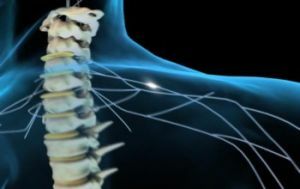
- reflected pain;
- unsuccessful position during night rest;
- prolonged fixation of the body in one position;
- manifestation of an infectious disease;
- excessive physical strain on the neck;
- supercooling;
- trauma to the neck;
- sedentary work.
How the
disease manifests The main symptoms of are:
- pains of a painful nature in the neck and head;
- appearance of weakness, nausea and dizziness;
- creeping crawl;
- numbness in the muscles of the hands.
The manifestation of pain syndrome can have a diverse character and can be expressed in shooting, tingling, pulsing.
As a rule, when the position of the head changes, the pain progresses. Also, the pain exacerbated by sudden movements or tension: sneezing, coughing.
Cervicalgia can manifest itself by turning and tilting the head, not letting them do it.
The patient has to turn around the whole body, or bend over the whole body to look at something or take an object.
Also cervicalgia can show itself by noise in the ears, numbness of the hands and occipital area, dizziness and nausea.
If the pain is given in the hands, manifested by numbness or a violation of motor functions - this may be a symptom of cervicobrachialgia.
If pain gives to the cervico-occipital region, this may be a manifestation of cervicocranygia.
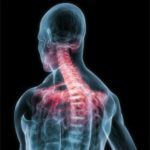 Myofascial pain syndrome can be caused by a large number of causes. You can find out more details in our article. What doctors and patients think about injections of hyaluronic acid into joints - opinions, opinions, pluses and minuses and other necessary information.
Myofascial pain syndrome can be caused by a large number of causes. You can find out more details in our article. What doctors and patients think about injections of hyaluronic acid into joints - opinions, opinions, pluses and minuses and other necessary information. Diagnostic Measures
The diagnostic methods for include:
- X-ray;
- Magnetic Resonance Imaging;
- computed tomography;
- other types of diagnostics.
Often, prolonged discomfort in the neck, shoulders and occiput may be a manifestation of a serious spine disease.
To distinguish cervicalgia from osteochondrosis or spondylosis, an in-depth analysis using tomography is needed.
Important in determining the diagnosis are the conditions under which pain manifested itself for the first time.
Was it after sleep or after hypothermia, after trauma or nervous overexertion. All cases are considered separately.
As the nerve endings and small vessels concentrate in the cervical region, pain from other parts of the spine gives an echo to the cervical collar zone.
Treatment of
syndrome Vertebrogenic cervicalgia implies a complex treatment, which happens:
- medication;
- physiotherapeutic;
- surgical.
Depending on the cause of the onset of pain, treatment is prescribed.
The standard methods for controlling cervicalgia include:
- taking painkillers and anti-inflammatory drugs;
- with spasms appoint muscle relaxants;
- wearing a "cervical collar;
- manual therapy( spinal traction);
- medical gymnastics;
- reflexotherapy;
- physiotherapy;
- application of orthopedic pillow.
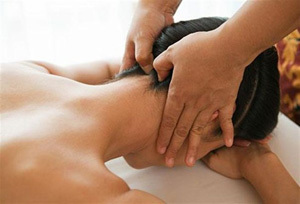 In the healing of the chronic and subacute form of the main role play: therapeutic exercises, massage and rest.
In the healing of the chronic and subacute form of the main role play: therapeutic exercises, massage and rest.
Massage relaxes muscles, frees the clamped nerve roots and removes painful sensations.
Therapeutic gymnastics strengthens the muscle tone and the result achieved by the massage. Peace implies the absence of sharp and rapid turns and trauma to the neck.
Surgical intervention is prescribed in cases of spinal cord injury at the cervical level and in case of necrosis threat of nerve roots with growing paresis.
Medications
When a pain syndrome occurs after severe physical exertion, hypothermia, or numbness of the neck muscles after sleep, ointments are used:
- Painkillers: Capsicum, Finalgon.
- Anti-inflammatory: Fastum gel, Ketonal.
- Complex effects: Dolobien gel.
These ointments are not of a pronounced curative nature. The use of these drugs will relieve the pain syndrome, will ease the condition.
Folk remedies
Popular popular remedies for pain relief include:
- rubbing with barberry root tincture;
- bath with herbal remedies.
These methods will not eliminate the causes of the disease, but will reduce the discomfort in the neck and occiput. The action of baths with herbs and sea salt has a warming and analgesic effect.
The rinsing of relieves stress in the cervical section of due to the gentle action of the curative components of the barberry root.
What should I do if I'm exacerbated?
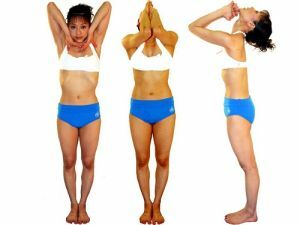 If you have a cold in the neck muscles or have an infringement of the nerve root during sleep or physical exertion, you should immediately soak the affected area with a therapeutic ointment.
If you have a cold in the neck muscles or have an infringement of the nerve root during sleep or physical exertion, you should immediately soak the affected area with a therapeutic ointment.
You can also inject or take medications in the form of tablets( Diclofenac, Indomethacin, Ibuprofen).
Next, you need to ensure peace of the neck, limit mobility for a while. Watch for the lack of drafts in the room.
Also can wrap the neck with a woolen or knitted scarf: this will provide additional warming up and reducing discomfort.
Preventive measures
For the prevention of the disease, the following measures should be taken:
- First, the factors causing an exacerbation of the disease or triggering its occurrence should be excluded.
- With a fixed lifestyle or sedentary work, you should periodically make small workouts.
- In cold weather it is necessary to dress warmly, and avoid drafts in the room.
- In order not to cause neck muscles to sweat during a night's sleep, you should use an orthopedic pillow and a mattress. Eliminate sleep on high pillows.
- A visit to the massage room can prevent unwanted discomfort in the muscles of the body.
- If you have a wrong posture, wear a corrective bandage and do exercises. It is also useful to visit the pool.
- Do not make sharp movements and turns of the neck, do not overstrain muscles.
Preventive gymnastics
To reduce the risk of vertebrogenic cervicalgia, perform the following set of exercises for the neck:
- Turning the head: in a sitting or standing position, turn your head in different directions slowly( 10 times).
- Nod head: in sitting or standing position, take a breath and gently tilt the head, and on exhalation - return to the starting position( 10 times).
- Head inclinations: in the same initial position, tilt the head to the right and left, trying to reach the ear to the shoulder. Do all the movements smoothly and slowly( 10 times).
- Movement forward-back: on exhalation tilt your head back and slightly upwards( without tipping over), and on inspiration - return it to its original position( 8 times).
- Shoulder work: on inspiration, lift the shoulders and take them back, on exhalation - return to the starting position( 10 times).
- Movement in a circle: smoothly rotate your head first in one direction, then - in the other( for 10 rotations).
Remember that it is easier to prevent the appearance of ailment than to treat it. A lot of money is spent on treatment, time and energy are wasted.
Daily prophylactic gymnastics will reduce the risk of disease to a minimum. All these exercises can be done during a work break or in the morning before work.

